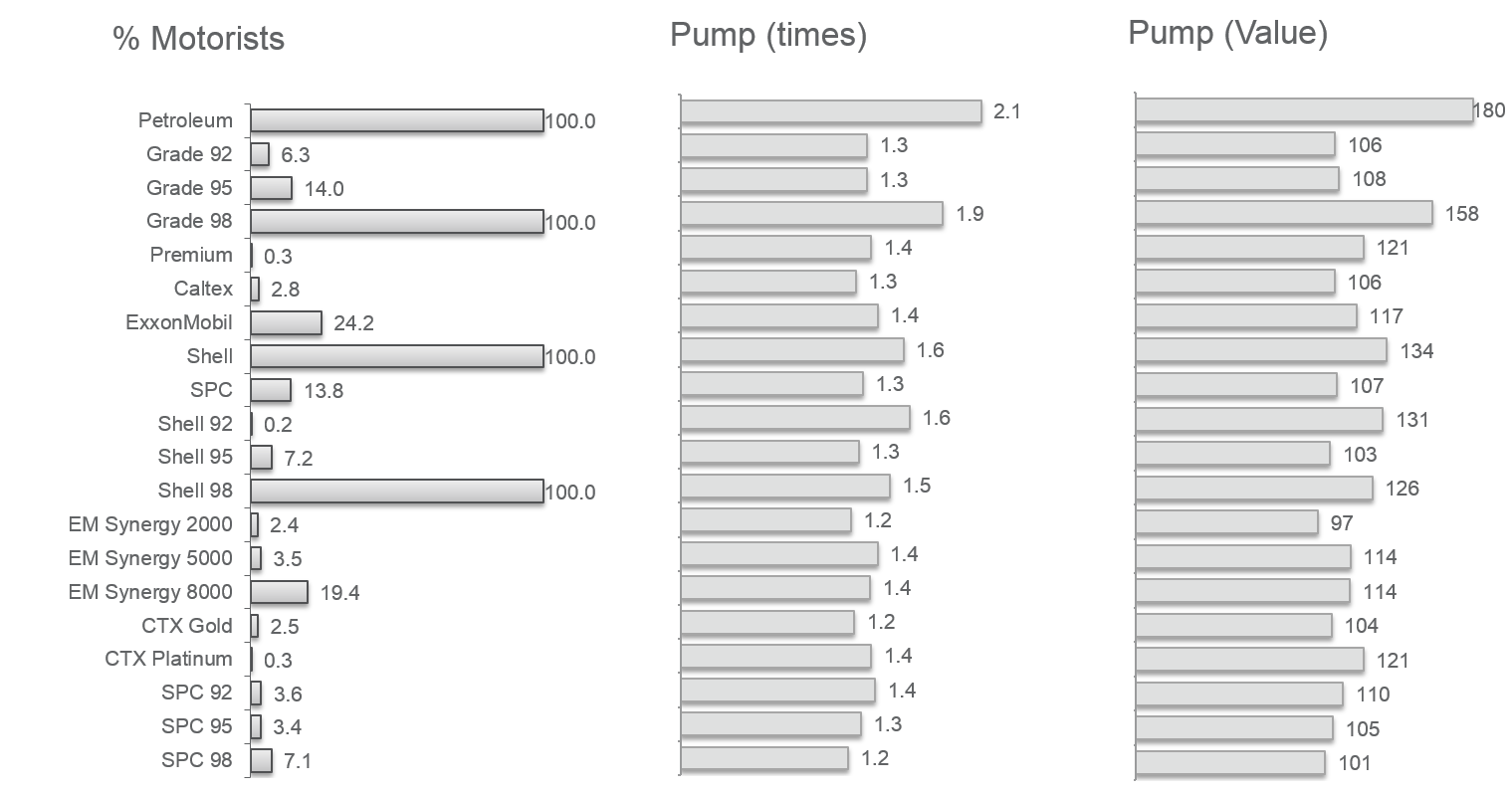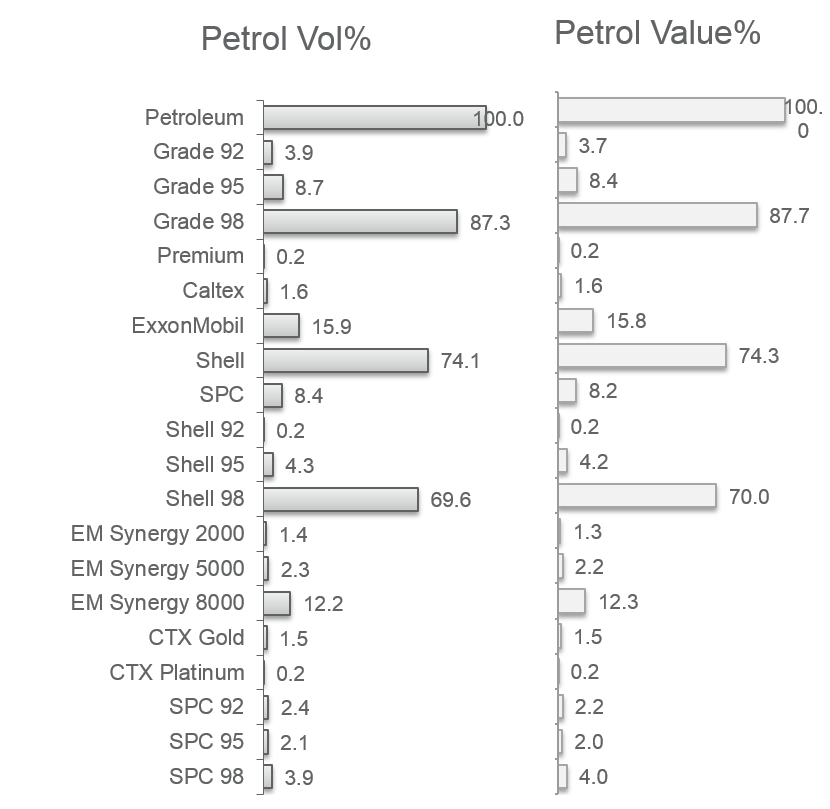

Exhibit 7.16 Petrol Basket for Shell 98 (a fictitious example).
Click to view demo.
The basket is an analysis
of transactions by a buyer group. Buyer group, as mentioned earlier, may be a
demographic group, a segment, or it may be a user-defined group of consumers,
defined on the basis of what they bought, where they bought or how much they
bought. It is often defined as buyers of a particular brand; in which case the
basket constitutes the repertoire of brands bought by the buyers of that brand.
For example, Exhibit 7.16 depicts the analysis of the petrol
basket for Shell 98 for a particular month. The basket reveals that loyalty for
Shell 98 is 69.6% in volume (frequency) terms and 70.0% in value terms. These
buyers pumped Shell 98 on an average 1.5 times that month, spending $126. It
also reveals that 19.4% of Shell 98 motorists pumped Synergy 8000 and that
Synergy 8000 constitutes 12.3% of the total spend on average. In total the
average Shell 98 motorists spend $180 (pumping 2.1 times) for that month.
Basket analysis is frequently used in digital marketing
to personalize user experiences. For example, the use of recommendations
(“Customers who bought this also bought ...”) by
Netflix and Amazon, to drive sales
and improve users’ on-site experience.
Cross basket, an interesting variation of the basket
analysis, analyses category purchases by buyers selected on basis of their buying
behaviour in some other category. For example, the cross basket of shampoo
purchases by Dove body wash buyers, would reveal the repertoire of shampoos
bought by Dove body wash buyers.
The basket and cross basket provide a comprehensive
understanding of the transactions by the buyer group, and as we will see from
the case Johnson’s Body Care,
at the end of this chapter, this is very useful for addressing a variety of business issues.
Yet another variation of the basket analysis, of great relevance
to retailers, is the shopping basket. It would
interest retailers to know the total spend, and the break-up of that spend across categories,
for the shoppers of some of their brands. These could be brands that they promote
most frequently, or they could be their house brands.
If a brand buyers’ shopping basket is large in terms of quantity and
value of purchases, that brand is considered a
transaction builder
Retailers would prefer to stock and promote these products because they tend to boost sales.